Impact of bombs from World War II felt at the edge of space
26 September 2018
World War II (WWII) lasted from 1939 until 1945 and was fought between the Axis powers (which included Germany, Italy and Japan) and the Allied powers (which included the United Kingdom [UK], the Soviet Union, China and the United States). Around 70 million people were killed in the war, the deadliest in human history. The impact of the war was especially serious in Europe, with many cities destroyed in bombing raids by aeroplanes. University of Reading researchers found that bombing raids not only caused damage on the ground but also shook the Earth’s atmosphere up to the edge of space. Scientists have shown that ‘shockwaves’ produced by the huge bombs dropped by Allied planes on European cities were felt very high up in the Earth’s atmosphere, up to 1000 km away. A shockwave happens when lots of energy is released from a small spot, shaking the area around it. The layer of the Earth’s atmosphere at the edge of space is called the ‘ionosphere’ and contains a lot of electrically charged particles, which can be measured by scientists. What happens in the ionosphere can affect some modern technologies such as radio communications or GPS systems. In the study published in Annales Geophysicae, researchers looked at old data of the ionosphere, collected by a research centre in the UK between 1943 and 1945. They found that the particles in the ionosphere are more spread out (less concentrated) than usual due to the shockwaves caused by WWII bombs. “It is astonishing to see how the ripples caused by man-made explosions on the ground can affect the edge of space. Each raid released the energy of at least 300 lightning strikes,” says professor Chris Scott. Scientists are using these findings to understand how other events that affect the Earth’s surface and lower atmosphere, such as lightning or volcanic eruptions, can also affect the upper atmosphere.Find out more
What are electrically charged particles?
What are shockwaves and what can cause them? Can you name three causes of shockwaves?
What are the names given to different layers of the Earth’s atmosphere?
If your parents or teachers are not available to help you, you can also find the answer to these questions by researching online or in the library.
Print version
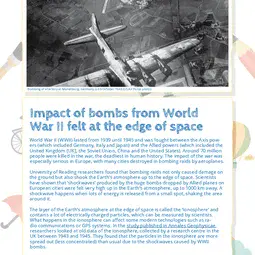
This is a kids' version of the EGU article: 'Impact of bombs from World War II felt at the edge of space'. It was written by Bárbara Ferreira (EGU Media and Communications Manager), reviewed for scientific content by Lê Binh San Pham (Communication Officer, Royal Observatory of Belgium, Belgium) and Arianna Piccialli (Belgian Institute for Space Aeronomy, Belgium), and for educational content by Phil Smith (Teacher Scientist Network, UK).
Translations
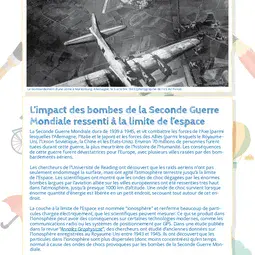
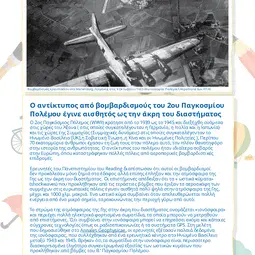
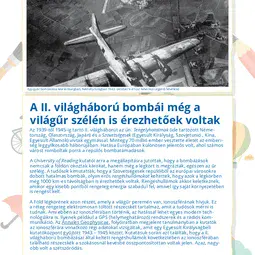
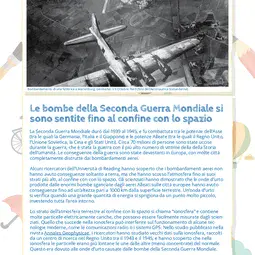
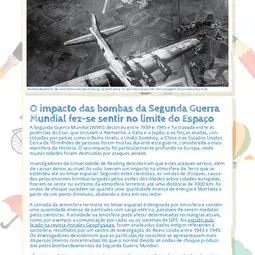
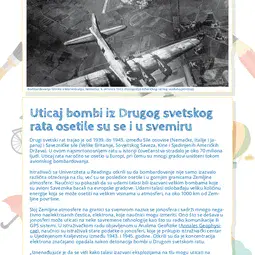
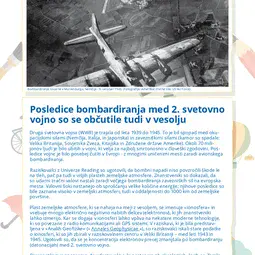
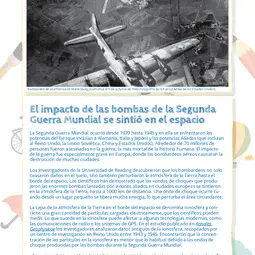
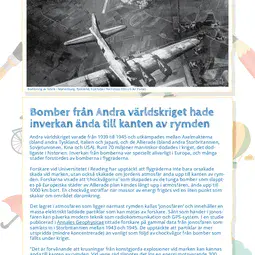
All English-language Planet Press releases are carefully edited, reviewed and proofed, by scientists, educators and EGU staff. Please note that once translated, Planet Press releases receive no further checks from EGU staff. For this reason, we cannot guarantee their accuracy, though we trust the quality of our voluntary translators and are grateful for their work.

